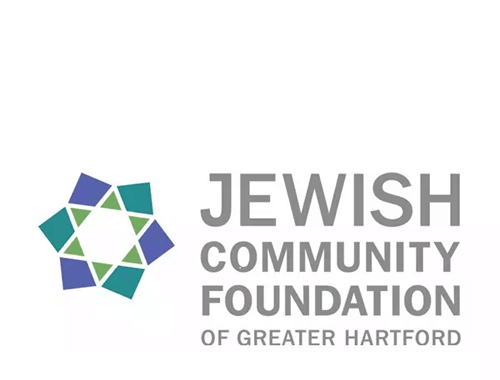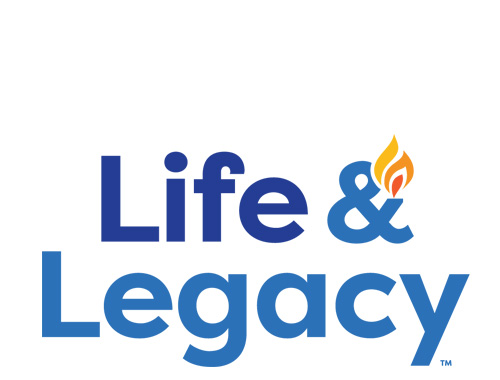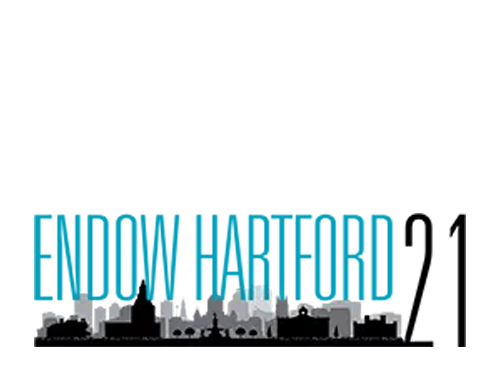Schechter Shavua: September 27, 2024
Is it a Bird? A Plane? No, it’s a Superworm!
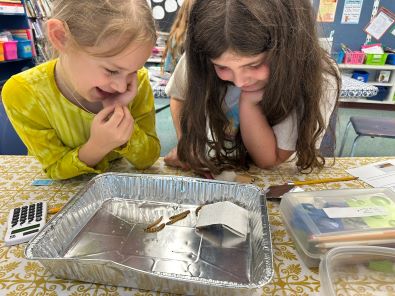 In order to demonstrate to Alim students (gr. 3-4) the overarching concepts including “What is science?” and “What do scientists do?” teacher Merissa Spector enlisted the help of some wiggly friends: Superworms! No, Superworms are not a type of comic hero; they are the larvae of a particular kind of beetle! The Alim scientists studied superworms to make observations of the worms’ behaviors, write down what they notice, and then record their wonderings and things the worms remind them of. Students then completed an experiment using the scientific method to test how well these superworms climb a variety of different materials.
In order to demonstrate to Alim students (gr. 3-4) the overarching concepts including “What is science?” and “What do scientists do?” teacher Merissa Spector enlisted the help of some wiggly friends: Superworms! No, Superworms are not a type of comic hero; they are the larvae of a particular kind of beetle! The Alim scientists studied superworms to make observations of the worms’ behaviors, write down what they notice, and then record their wonderings and things the worms remind them of. Students then completed an experiment using the scientific method to test how well these superworms climb a variety of different materials.
Click HEREto see photos of Alim students’ study of Superworms.
Anafim Scientists Use their Senses to Explore the World Around Them
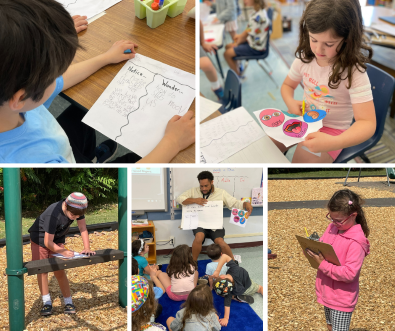 Anafim students (gr. 1-2) have also been investigating the qualities that make a great scientist: among them, the inclination to ask themselves what they notice and wonder about their surroundings before they move forward with an investigation or experiment. Along with teacher Nick Ricciardi, students discussed how using the Five Senses can lay a foundation for curiosity and assist scientists in what they notice and/or wonder. Last week, they took advantage of the beautiful weather and explored and investigated the playground. Armed with a clipboard, each student recorded a list of things they notice, what they wonder about, and a connection to one of the five senses.
Anafim students (gr. 1-2) have also been investigating the qualities that make a great scientist: among them, the inclination to ask themselves what they notice and wonder about their surroundings before they move forward with an investigation or experiment. Along with teacher Nick Ricciardi, students discussed how using the Five Senses can lay a foundation for curiosity and assist scientists in what they notice and/or wonder. Last week, they took advantage of the beautiful weather and explored and investigated the playground. Armed with a clipboard, each student recorded a list of things they notice, what they wonder about, and a connection to one of the five senses.
Back in the classroom, each shared some of the situations they noticed or the questions about which they wondered. This discussion will help the class to collectively create excellent "Scientific Questions," to encourage each other to make their questions and observations as specific as possible.
Engineering Design Pops with Excitement
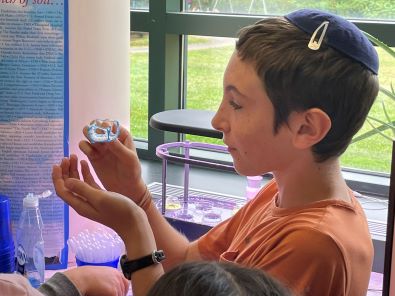 What do shimmering, wiggly bubbles have to teach students about the Engineering Design Process? A lot more than you’d think! Middle school students in Makerspace class have been practicing the steps necessary for successful Engineering design (brainstorming, designing, building, testing, and making adjustments to the design) through the age-old magic and fun of bubble wands!
What do shimmering, wiggly bubbles have to teach students about the Engineering Design Process? A lot more than you’d think! Middle school students in Makerspace class have been practicing the steps necessary for successful Engineering design (brainstorming, designing, building, testing, and making adjustments to the design) through the age-old magic and fun of bubble wands!
Under teacher Laurie Stanfield’s direction, students imagined and sketched their ideas to make a bubble wand, then used fun and colorful 3D Doodler pens to create wands in those shapes. Students tested their designs to see how well their wands worked. Was their wand too flimsy? Did it need additional support? How many bubbles -- and of what size -- could they create with their wand? Did their wand design express their own creativity? Each student tweaked their design for bubble size, a "double bubble," weirdly shaped bubbles, and even bubbles in a cube. As they continued designing and experimenting, the Engineering Design Process became second nature to the students; they will continue to use this thought process whenever they are in Makerspace.
Click HERE to see more Bubblicious photos!
Parashat Nitzavim-Vayelekh—Who wasn’t there?
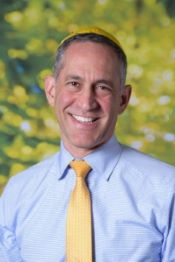 Moses has gathered the Israelites for one of his final speeches, and starts to address his audience. He singles out some of the groups who were present—tribal leaders and wood-choppers, women and men—and then says, “Not with you alone do I make this covenant and its sanctions. Rather, (I make it) both with those who are standing here with us today before the LORD our God, and with those who are not here with us today.” (Deut. 29:13-14, adapted from the NJPS Tanakh)
Moses has gathered the Israelites for one of his final speeches, and starts to address his audience. He singles out some of the groups who were present—tribal leaders and wood-choppers, women and men—and then says, “Not with you alone do I make this covenant and its sanctions. Rather, (I make it) both with those who are standing here with us today before the LORD our God, and with those who are not here with us today.” (Deut. 29:13-14, adapted from the NJPS Tanakh)
What a mysterious pronouncement! Whom exactly does Moses mean by “those who are not here”? As we might expect, various Torah commentators offer some intriguing answers. I found two that speak powerfully to our school community.
To Rashi (11th c. France), the phrase “With those who are not with us here this day” refers to future generations. In other words, Moses wasn’t just speaking to our distant ancestors; he was also speaking to us, and to our children. We too are part of the covenant with God.
Shlomo David Luzzatto (19th c. Italy) disagrees with Rashi; he points out that future generations aren’t mentioned or hinted at in this passage. Instead, he believes that Moses intended to include Israelites who couldn’t attend the speech. Perhaps they were sick, or injured, or taking care of a family member, or were kept for some other reason from making it to Moses’s speech. Even though they couldn’t come, Moses didn’t want them to feel excluded.
Both of these perspectives feel meaningful to our mission at Schechter. We are all about future generations, and about inspiring our students to build a vibrant Jewish future! And at the same time, we are trying to constantly ask, “What barriers are keeping people away? What might we do to include people who aren’t currently able to be with us?” We are constantly trying to expand our tent.
These interpretations are also meaningful messages for Rosh Hashanah. As we prepare to start a new year, let’s ask ourselves how we can help future generations to feel connected to the Jewish people—and how we can make sure that no one feels excluded. Together, we build an inclusive community that builds for the future.
Shabbat shalom and shanah tovah,
Rabbi Jonathan Berger
Head of School
Questions for the Shabbat/Holiday table:
- Who do youthink Moses really meant to include in that mysterious phrase? Do you agree with Rashi or Luzzatto—or do you have your own interpretation?
- The idea that future generations are part of the covenant can be inspiring and meaningful; it can also be overwhelming and oppressive: “You don’t have a choice; you were born into this.” How do you understand the idea of “a covenant with future generations”?

Are you curious to learn more about the holiday of Rosh Hashanah? My Jewish Learning has some fantastic resources, explanations, FAQs, and even recipes! Click HERE to check it out!
Solomon Schechter Day School
of Greater Hartford
26 Buena Vista Road
West Hartford, CT 06107
© Solomon Schechter Day School of Greater Hartford | Site design Knowles Kreative

